Microstructure Features and Mechanical Properties of Casted CoFeB Alloy Target
Abstract
1. Introduction
2. Materials and Methods
3. Results and Discussions
3.1. Solidification Process Analysis
- (1)
- A→B stage: When the melt cools, the component first passes through the Fe2B solid-phase surface and crystallizes to form Fe2B.
- (2)
- B→C stage: When the melt continues to cool, it touches the intersection line of the Fe2B and Fe (fcc, face-centered cubic). The first eutectic reaction L→Fe2B + Fe(fcc) starts to occur. The phase composition is L, pre-crystalline Fe2B, and primary eutectic organization (Fe2B + Fe(fcc)) at this stage.
- (3)
- C→D stage: When the melt continues to cool to the eutectic point C, the remaining liquid phase undergoes a secondary eutectic reaction: L→Fe2B + Fe3B + Fe(fcc). At this point, the liquid is consumed and completely transformed into a solid state, and the phase composition of the ingot is pre-crystalline Fe2B, primary eutectic organization (Fe2B + Fe(fcc)), and secondary eutectic organization (Fe2B + Fe3B + Fe(fcc). When the ingot temperature continues to decrease to the isotropic transition point D of Fe (913 °C), Fe(fcc) is converted to Fe (bcc, body-centered cubic).
3.2. Microstructure Features
3.3. Mechanical Properties
4. Conclusions
- (1)
- The microstructure of Co20Fe60B20 alloy consists of a coarse, needle-like Fe2B phase that crystallizes first, a primary lamellar eutectic organization (Fe2B + bcc-Fe), and a secondary eutectic organization (Fe3B + Fe2B + bcc-Fe phase, in which Fe3B precipitates on the surface of the Fe2B in a core–shell form).
- (2)
- The orientation of bcc-Fe is randomly distributed, while there are two main kinds of textures in Fe2B: {100} <001> and Gaussian texture {110} <001>.
- (3)
- The Co20Fe60B20 alloy has poor mechanical properties at room temperature, with a tensile strength of 140MPa, yield strength of 87MPa, and elongation of 1% only. The reasons for the poor plasticity of the Co20Fe60B20 alloy are as follows: (1) the hard and brittle Fe2B precipitates in the form of needles; (2) Fe3B precipitates on the surface of Fe2B in a core–shell form, and cracks tend to form at the phase interface.
Author Contributions
Funding
Institutional Review Board Statement
Informed Consent Statement
Data Availability Statement
Conflicts of Interest
References
- Khoram, S.; Zha, Y.; Zhang, J.; Li, J. Challenges and opportunities: From near-memory computing to in-memory computing. In Proceedings of the 2017 ACM on International Symposium on Physical Design, Portland, OR, USA, 19–22 March 2017; pp. 43–46. [Google Scholar] [CrossRef]
- Dieny, B.; Prejbeanu, I.L.; Garello, K.; Gambardella, P.; Freitas, P.; Lehndorff, R.; Raberg, W.; Ebels, U.; Demokritov, S.O.; Akerman, J.; et al. Opportunities and challenges for spintronics in the microelectronics industry. Nat. Electron. 2020, 3, 446–459. [Google Scholar] [CrossRef]
- Kim, N.S.; Austin, T.; Baauw, D.; Mudge, T.; Flautner, K.; Hu, J.S.; Irwin, M.; Kandemir, M.; Narayanan, V. Leakage current: Moore’s law meets static power. Computer 2003, 36, 68–75. [Google Scholar] [CrossRef]
- Kuroda, T. Low-power, high-speed CMOS VLSI design. In Proceedings of the IEEE International Conference on Computer Design: VLSI in Computers and Processors, Freiburg, Germany, 18 September 2002; IEEE: Piscataway, NJ, USA, 2002; pp. 310–315. [Google Scholar] [CrossRef]
- Khvalkovskiy, A.V.; Apalkov, D.; Watts, S.; Chepulskii, R.; Beach, R.S.; Ong, A.; Tang, X.; Driskill-Smith, A.; Butler, W.H.; Visscher, P.B. Erratum: Basic principles of STT-MARM cell operation in memory arrays. J. Phys. D Appl. Phys. 2013, 46, 074001. [Google Scholar] [CrossRef]
- Tsuchida, K.; Inaba, T.; Fujita, K.; Ueda, Y.; Shimizu, T.; Asao, Y.; Kajiyama, T.; Iwayama, M.; Sugiura, K.; Ikegawa, S.; et al. A 64Mb MRAM with clamped-reference and adequate-reference schemes. In Proceedings of the 2010 IEEE International Solid-State Circuits Conference—(ISSCC), San Francisco, CA, USA, 7–11 February 2010; pp. 258–259. [Google Scholar] [CrossRef]
- Hirohata, A. MRAM makes its mark. Nat. Electron. 2022, 5, 832–833. [Google Scholar] [CrossRef]
- Guo, Z.X.; Yin, J.L.; Bai, Y.; Zhu, D.Q.; Shi, K.; Wang, G.; Cao, K.; Zhao, W.S. Spintronics for Energy-Efficient Computing: An Overview and Outlook. Proc. IEEE 2021, 109, 1398–1417. [Google Scholar] [CrossRef]
- Shao, Q.M.; Li, P.; Liu, P.; Yang, H.; Fukami, S.; Razavi, A.; Wu, H.; Wang, K.; Freimuth, F.; Mokrousov, Y.; et al. Roadmap of Spin–Orbit Torques. IEEE Trans. Magn. 2021, 57, 800439. [Google Scholar] [CrossRef]
- Zhang, Y.; Wang, Y.Z.; Han, X.F.; Deng, H.; Huang, H.; Guo, J.; Liang, Y.; Si, W.; Jiang, A.; Liu, H.; et al. Electron irradiation total ionizing dose (TID) effect of tunneling magnetoresistance sensors. J. Magn. Magn. Mater. 2022, 563, 169954. [Google Scholar] [CrossRef]
- Wang, J.; Lian, C.; Bai, Y.; Wang, G.; Zhang, Z.; Zheng, Z.; Chen, L.; Lin, K.; Zhang, K.; Zhang, Y.; et al. A self-matching complementary-reference sensing scheme for high-speed and reliable toggle spin torque MRAM. IEEE Trans. Circuits Syst. I 2020, 67, 4247–4258. [Google Scholar] [CrossRef]
- Alzate, J.G.; Arslan, U.; Bai, P.; Brockman, J.; Chen, Y.J.; Das, N.; Fischer, K.; Ghani, T.; Heil, P.; Hentges, P.; et al. 2 MB array-level demonstration of STT-MRAM process and performance towards L4 cache applications. In Proceedings of the 2019 IEEE International Electron Devices Meeting (IEDM), San Francisco, CA, USA, 7–11 December 2019; pp. 2.4.1–2.4.4. [Google Scholar] [CrossRef]
- Park, J.H.; Lee, J.; Jeong, J.; Pi, U.; Kim, W.; Lee, S.; Noh, E.; Kim, K.; Lim, W.C.; Kwon, S.; et al. A novel integration of STT-MRAM for on-chip hybrid memory by utilizing non-volatility modulation. In Proceedings of the 2019 IEEE International Electron Devices Meeting (IEDM), San Francisco, CA, USA, 7–11 December 2019; pp. 2.5.1–2.5.4. [Google Scholar] [CrossRef]
- Lee, K.; Chao, R.; Yamane, K.; Naik, V.B.; Yang, H.; Kwon, J.; Chung, N.L.; Jang, S.H.; Behin-Aein, B.; Lim, J.; et al. 22-nm FD-SOI embedded MRAM technology for low-power automotive-grade-l MCU applications. In Proceedings of the 2018 IEEE International Electron Devices Meeting (IEDM), San Francisco, CA, USA, 1–5 December 2018; pp. 27.1.1–27.1.4. [Google Scholar] [CrossRef]
- Ferdaus, F.; Bahar Talukder, B.M.S.; Sadi, M.; Rahman, M.T. True Random Number Generation using Latency Variations of Commercial MRAM Chips. In Proceedings of the 22nd International Symposium on Quality Electronic Design (ISQED), Santa Clara, CA, USA, 7–9 April 2021; pp. 510–515. [Google Scholar] [CrossRef]
- Na, T.; Kang, S.H.; Jung, S.O. STT-MRAM sensing: A review. IEEE Trans. Circuits Syst. II Express Briefs 2020, 68, 12–18. [Google Scholar] [CrossRef]
- Ikeda, S.; Miura, K.; Yamamoto, H.; Mizunuma, K.; Gan, H.; Endo, M.; Kanai, S.; Hayakawa, J.; Matsukura, F.; Ohno, H. A perpendicular-anisotropy CoFeB–MgO magnetic tunnel junction. Nat. Mater. 2010, 9, 721–724. [Google Scholar] [CrossRef] [PubMed]
- Sato, H.; Yamanouchi, M.; Ikeda, S.; Fukami, S.; Matsukura, F.; Ohno, H. Perpendicular-anisotropy CoFeB-MgO magnetic tunnel junctions with a MgO/CoFeB/Ta/CoFeB/MgO recording structure. Appl. Phys. Lett. 2012, 101, 022414. [Google Scholar] [CrossRef]
- Li, H.; Xie, Y.; Yang, H.; Hu, H.; Li, M.; Li, R.-W. The Effect of Size and Strain on Micro Stripe Magnetic Domain Structure of CoFeB Thin Films. Metals 2023, 13, 678. [Google Scholar] [CrossRef]
- Son, H.; Park, J.; Lee, H.; Choi-Yim, H. Annealing Effect in Amorphous Fe-Co-B-Si-Nb According to Fe/Co Ratio. Metals 2023, 13, 715. [Google Scholar] [CrossRef]
- Liu, Y.Q.; Zhao, X.S.; Yang, J.; Shen, J.Y. Thermodynamic optimization of the boron–cobalt–iron system. J. Alloys Compd. 2011, 509, 4805–4810. [Google Scholar] [CrossRef]
- Raghavan, V. B-Co-Fe (boron-cobalt-iron). J. Phase Equilibria Diffus. 2012, 33, 392–394. [Google Scholar] [CrossRef]
- Wallisch, W.; Fidler, J.; Toson, P.; Sassik, H.; Svagera, R.; Bernardi, J. Synthesis and characterization of (Fe, Co) 2–3B microcrystalline alloys. J. Alloys Compd. 2015, 644, 199–204. [Google Scholar] [CrossRef]
- Rinaldi, A.; Correa-Duarte, M.A.; Salgueirino-Maceira, V.; Licoccia, S.; Traversa, E.; Dávila-Ibáñez, A.; Peralta, P.; Sieradzki, K. Elastic properties of hard cobalt boride composite nanoparticles. Acta Mater. 2010, 58, 6474–6486. [Google Scholar] [CrossRef]
- Li, X.; Wang, C.; Han, X.; Wu, Y. Surfactant-free synthesis and electromagnetic properties of Co–Ni–B composite particles. Mater. Sci. Eng. B 2013, 178, 211–217. [Google Scholar] [CrossRef]
- Euchner, H.; Mayrhofer, P.H. Designing thin film materials—Ternary borides from first principles. Thin Solid Films 2015, 583, 46–49. [Google Scholar] [CrossRef] [PubMed]
- Klemenz, S.; Schuch, J.; Hawel, S.; Zieschang, A.; Kaiser, B.; Jaegermann, W.; Albert, B. Synthesis of a Highly Efficient Oxygen-Evolution Electrocatalyst by Incorporation of Iron into Nanoscale Cobalt Borides. ChemSusChem 2018, 11, 3150–3156. [Google Scholar] [CrossRef] [PubMed]
- Wells, J.; Lee, J.H.; Mansell, R.; Cowburn, R.; Kazakova, O. Controlled manipulation of domain walls in ultra-thin CoFeB nanodevices. J. Magn. Magn. Mater. 2016, 400, 219–224. [Google Scholar] [CrossRef]
- Kim, J.S.; Kim, G.; Jung, J.; Jung, K.; Cho, J.; Kim, W.-Y.; You, C.-Y. Control of crystallization and magnetic properties of CoFeB by boron concentration. Sci. Rep. 2022, 12, 4549. [Google Scholar] [CrossRef]
- Li, Z.P.; Li, S.; Zheng, Y.; Fang, J.; Chen, L.; Liang, H.; Wang, H. The study of origin of interfacial perpendicular magnetic anisotropy in ultra-thin CoFeB layer on the top of MgO based magnetic tunnel junction. Appl. Phys. Lett. 2016, 109, 182403. [Google Scholar] [CrossRef]
- Cho, J.H.; Jung, J.Y.; Cho, S.Y.; You, C.Y. Effect of annealing temperature on exchange stiffness of CoFeB thin films. J. Magn. Magn. Mater. 2015, 395, 18–22. [Google Scholar] [CrossRef][Green Version]
- Bilzer, C.; Devolder, T.; Kim, J.V.; Counil, G.; Chappert, C.; Cardoso, S.; Freitas, P.P. Study of the dynamic magnetic properties of soft CoFeB films. J. Appl. Phys. 2006, 100, 053903. [Google Scholar] [CrossRef]
- Lkeda, S.; Hayakawa, J.; Ashizawa, Y.; Lee, Y.M.; Miura, K.; Hasegawa, H.; Tsunoda, M.; Matsukura, F.; Ohno, H. Tunnel magnetoresistance of 604% at 300K by suppression of Ta diffusion in CoFeB/MgO/CoFeB pseudo-spin-valves annealed at high temperature. Appl. Phys. Lett. 2008, 93, 082508. [Google Scholar] [CrossRef]
- Harres, A.; Mallmann, T.A.; Gamino, M.; Correa, M.A.; Viegas, A.D.C.; da Silva, R.B. Magnetization reversal processes in amorphous CoFeB thin films. J. Magn. Magn. Mater. 2022, 552, 169135. [Google Scholar] [CrossRef]
- Xu, Z.; Qin, L. Effects of sputtering parameters and annealing temperatures on magnetic properties of CoFeB films. J. Magn. Magn. Mater. 2021, 538, 168302. [Google Scholar] [CrossRef]
- Liu, B.H.; Taiebeh, T.; Kenny, O.; Hanwei, T.; Mo, Z.Q.; Jeffrey, L.; Pik, K.T.; Zhao, Y.Z.; Dong, Z.L.; Dimitri, H.; et al. Electron radiation-induced material diffusion and nanocrystallization in nanostructured amorphous CoFeB thin film. Acta Mater. 2018, 161, 221–236. [Google Scholar] [CrossRef]
- GB/T 228.1-2010; Metallic Materials—Tensile Testing—Part 1: Method of Test at Room Temperature. Ministry of Communi-cations of the PRC: Beijing, China, 2010.
- García-Léon, R.A.; Martínez-Trinidad, J.; Campos-Silva, I.; Wong-Angel, W. Mechanical characterization of the AISI 316L alloy exposed to boriding process. DYNA 2020, 87, 34–41. [Google Scholar] [CrossRef]
- Özbek, I.; Konduk, B.; Bindal, C.; Ucisik, A. Characterization of borided AISI 316L stainless steel implant. Vacuum 2022, 65, 521–525. [Google Scholar] [CrossRef]
- Martini, C.; Palombarini, G.; Carbucicchio, M. Mechanism of thermochemical growth of iron borides on iron. J. Mater. Sci. 2024, 39, 933–937. [Google Scholar] [CrossRef]
- Ahmed, T.; David, W.G.; Suraj, M.V.; Ohodnicki, P.R. Electromagnetic assisted thermal processing of amorphous and nanocrystalline soft magnetic alloys: Fundamentals and advances. J. Alloys Compd. 2021, 854, 156480. [Google Scholar] [CrossRef]
- Hayes, R.; Ahmed, A.; Edge, T.; Zhang, H. Core-shell particles: Preparation, fundamentals and applications in high performance liquid chromatography. J. Chromatogr. A 2014, 1357, 36–52. [Google Scholar] [CrossRef]
- Ramli, R.A.; Laftah, W.A.; Hashim, S. Core-shell polymers: A review. RSC Adv. 2013, 3, 15543–15565. [Google Scholar] [CrossRef]
- Sun, N.; Xiao, Z. Synthesis and performances of phase change materials microcapsules with a polymer/BN/TiO2 hybrid shell for thermal energy storage. Energy Fuels 2017, 31, 10186–10195. [Google Scholar] [CrossRef]
- Akamatsu, K.; Yamaguchi, T. Novel preparation method for obtaining pH-responsive Core-shell microcapsule reactors. Ind. Eng. Chem. Res. 2007, 46, 124–130. [Google Scholar] [CrossRef]
- Chen, L.; Liu, W.; Yu, L.; Cheng, Y.; Ren, K.; Sui, H.; Yi, X.; Duan, H. Probabilistic and constitutive models for ductile-to-brittle transition in steels: A competition between cleavage and ductile fracture. J. Mech. Phys. Solids 2020, 135, 103809. [Google Scholar] [CrossRef]
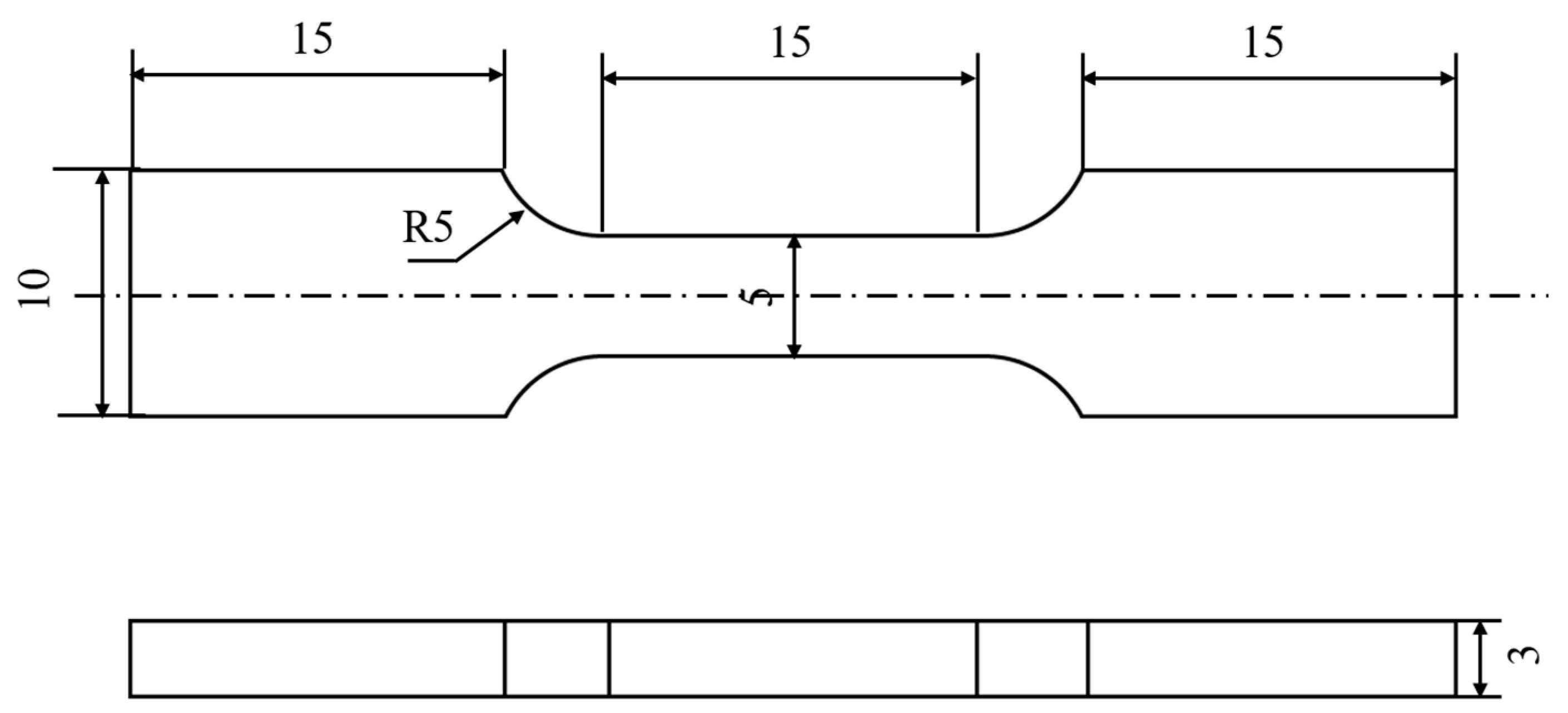
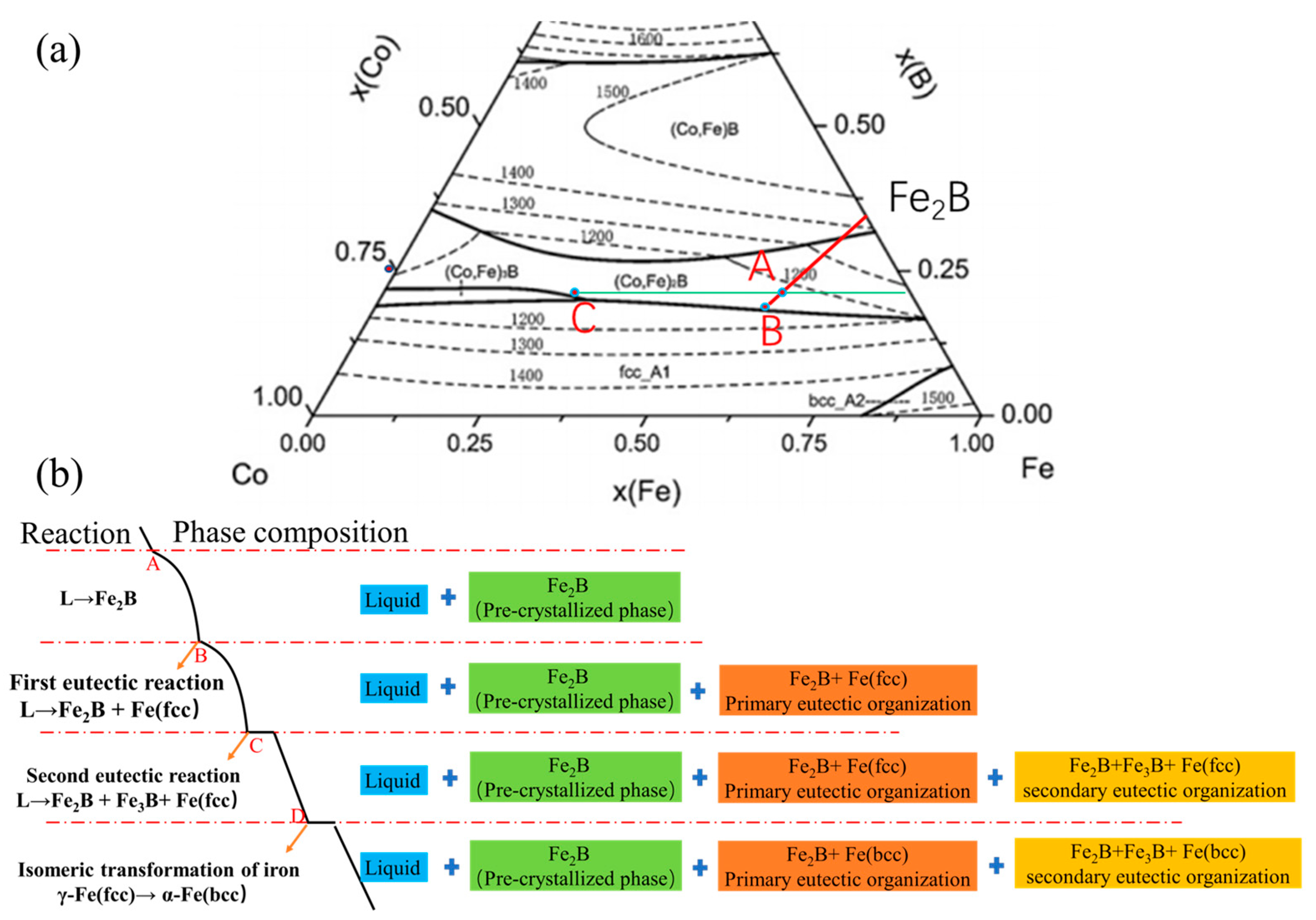

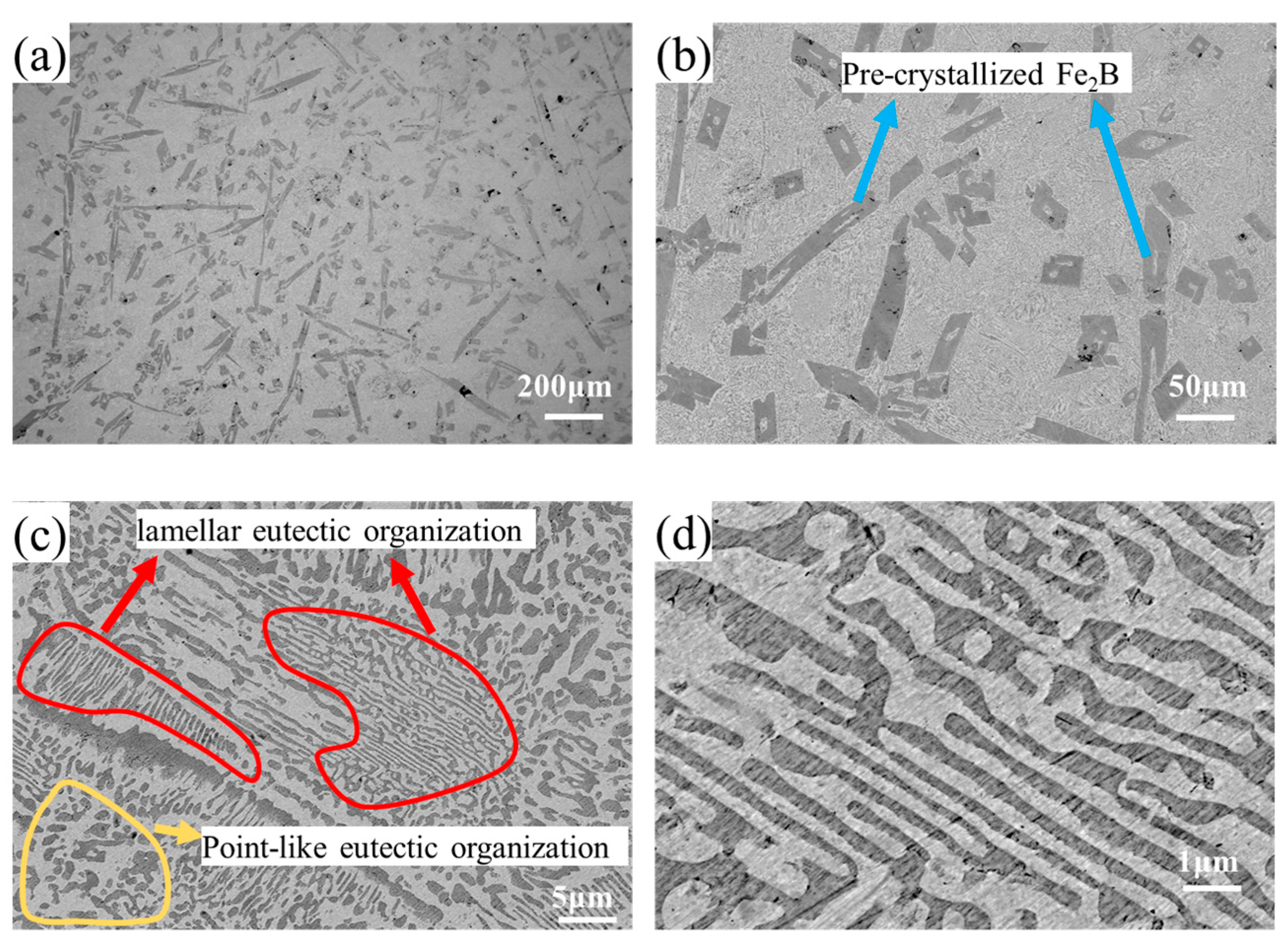


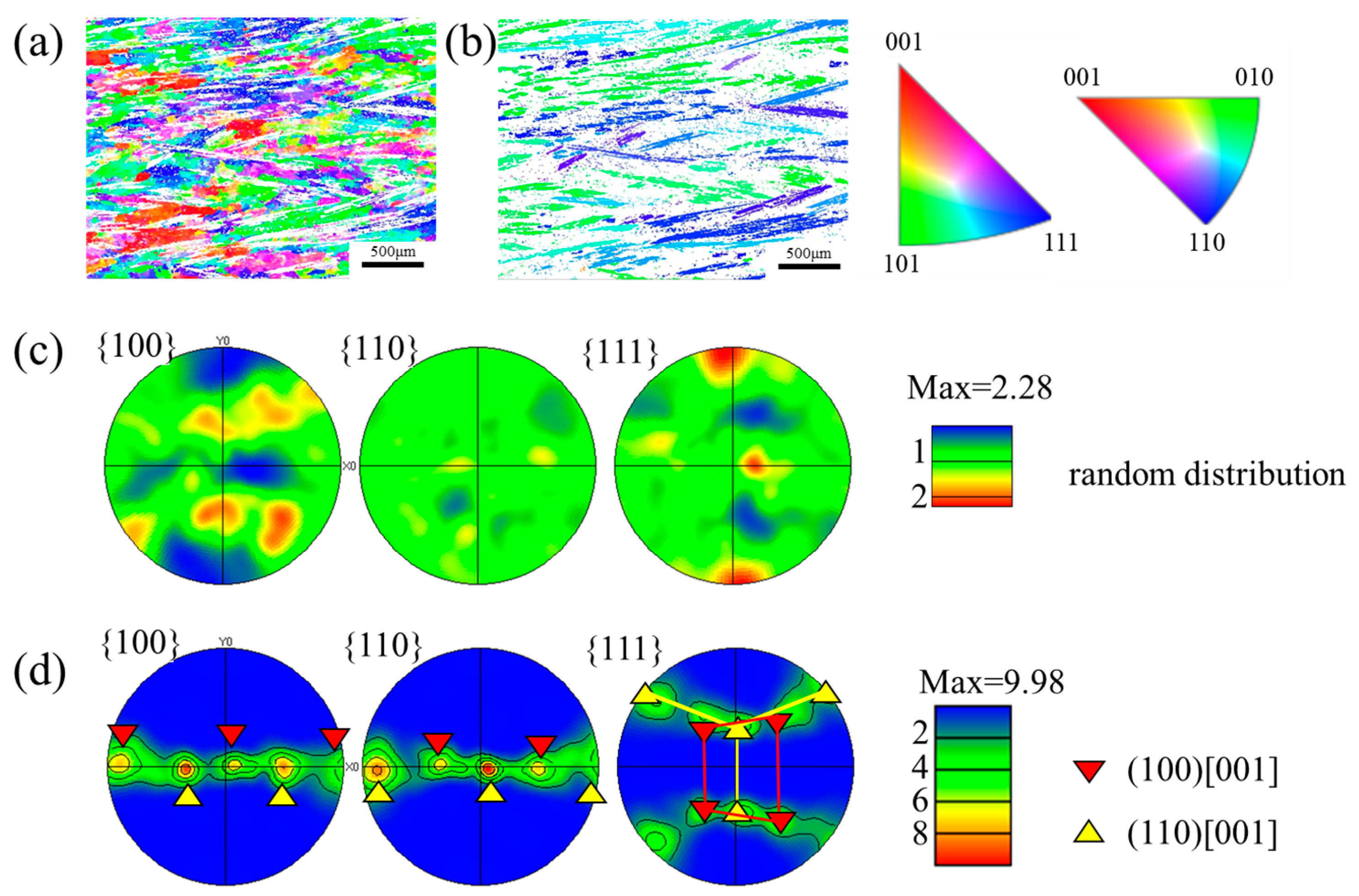
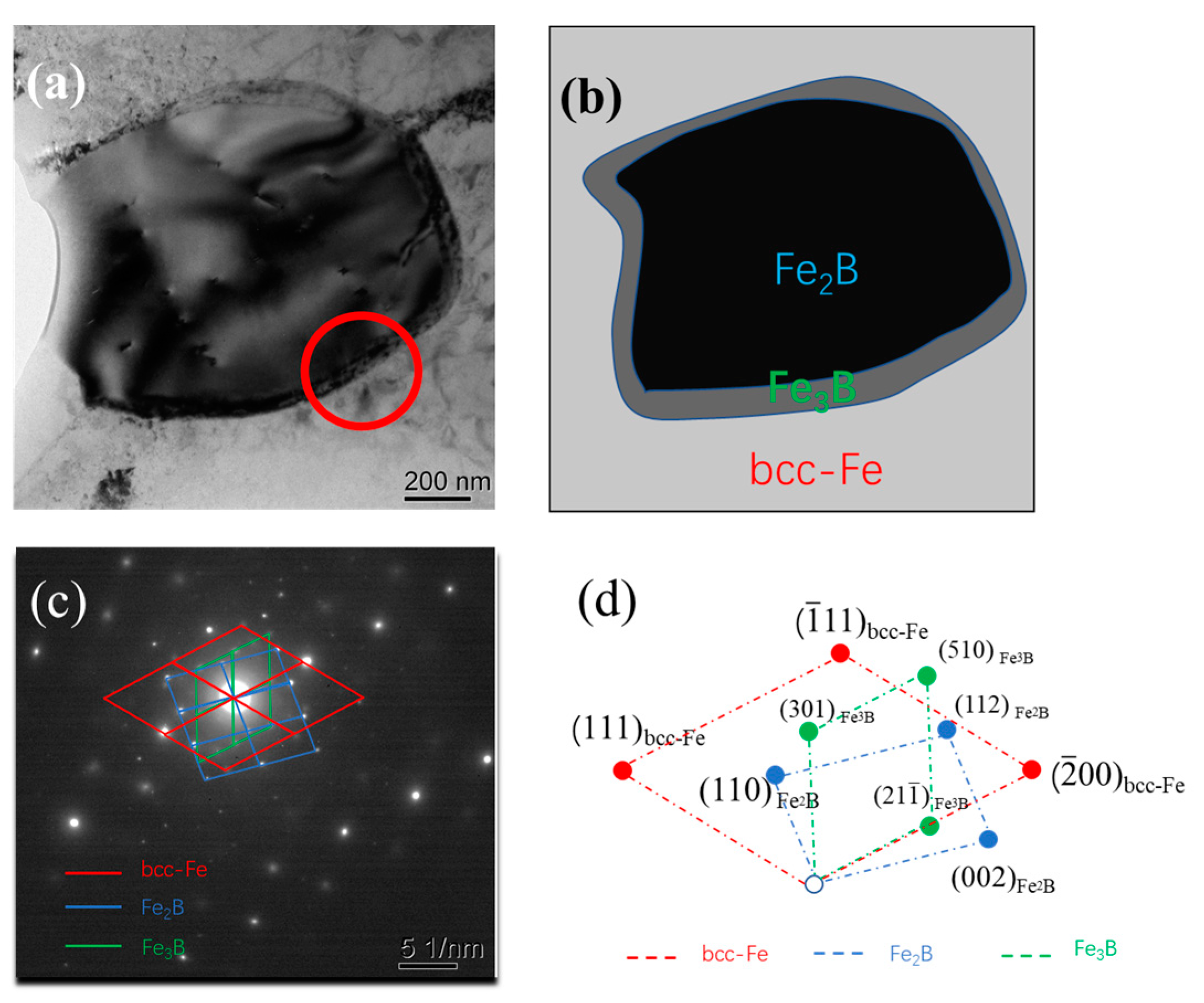




Disclaimer/Publisher’s Note: The statements, opinions and data contained in all publications are solely those of the individual author(s) and contributor(s) and not of MDPI and/or the editor(s). MDPI and/or the editor(s) disclaim responsibility for any injury to people or property resulting from any ideas, methods, instructions or products referred to in the content. |
© 2024 by the authors. Licensee MDPI, Basel, Switzerland. This article is an open access article distributed under the terms and conditions of the Creative Commons Attribution (CC BY) license (https://creativecommons.org/licenses/by/4.0/).
Share and Cite
Zhu, Z.; He, J.; Li, Y.; Luo, J.; Xu, G.; Yang, W.; Liu, D.; Gao, J. Microstructure Features and Mechanical Properties of Casted CoFeB Alloy Target. Coatings 2024, 14, 255. https://doi.org/10.3390/coatings14030255
Zhu Z, He J, Li Y, Luo J, Xu G, Yang W, Liu D, Gao J. Microstructure Features and Mechanical Properties of Casted CoFeB Alloy Target. Coatings. 2024; 14(3):255. https://doi.org/10.3390/coatings14030255
Chicago/Turabian StyleZhu, Ziyi, Jinjiang He, Yongjun Li, Junfeng Luo, Guojin Xu, Wenkui Yang, Dan Liu, and Jiali Gao. 2024. "Microstructure Features and Mechanical Properties of Casted CoFeB Alloy Target" Coatings 14, no. 3: 255. https://doi.org/10.3390/coatings14030255
APA StyleZhu, Z., He, J., Li, Y., Luo, J., Xu, G., Yang, W., Liu, D., & Gao, J. (2024). Microstructure Features and Mechanical Properties of Casted CoFeB Alloy Target. Coatings, 14(3), 255. https://doi.org/10.3390/coatings14030255



